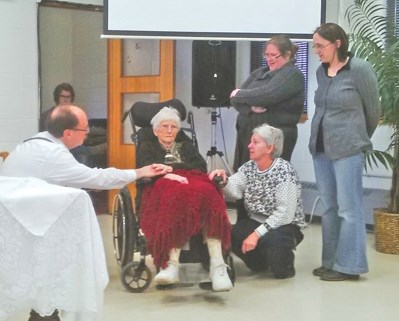A crumbling physical foundation didn’t weaken the First Baptist Church congregation.
In June of 2014, an inspection by the Office of the Fire Commissioner and the City of Flin Flon condemned the church building due to a weakened foundation.
The building, constructed in 1938, had suffered extensive erosion in part due to the harsh winter, and the wall facing Channing Drive was in danger of collapsing.
But while the building itself was being torn down that fall, the people of the church found a new home.
The First United Lutheran Church opened its doors and the Baptists began holding services in the lower level of the Second Avenue building.
“We use the lower half of the building and they use the upper half,” explains Pastor Jim Galbraith of First Baptist.
“It works very well for both groups.”
The arrangement is going smoothly for both congregations and Galbraith reports that at a recent meeting it was decided to continue the partnership for the next two years. At that time the situation will once again be reviewed.
With both congregations being fairly small in numbers, with about 35 or 40 people attending each service on a regular basis, one building is adequate to accommodate their needs at this time.
“If in two years our congregation has expanded, we will make a decision to either acquire an existing building or build a new church, but for the present time this arrangement is working well,” Galbraith said.
Both congregations hold regular services at 10:30 am on Sundays in addition to other prayer groups and meetings throughout the week.
“We sometimes have shared Sunday school programs and joint celebrations,” said Reverend Raymond Knight, who leads services for the Lutheran church. “It’s a situation that works quite well for both congregations.”
Revenue from the rental of the lower portion of the building can be used to cover expenses for the Lutheran church, benefiting this congregation as well.
The Lutheran congregation is well versed in the spirit of cooperation as they share the services of Rev. Knight with the Anglican Parish of St. Peter and St. James.
“Churches have buildings and that’s a good thing, but the church really is the people who are serving the Lord together,” said Galbraith.




